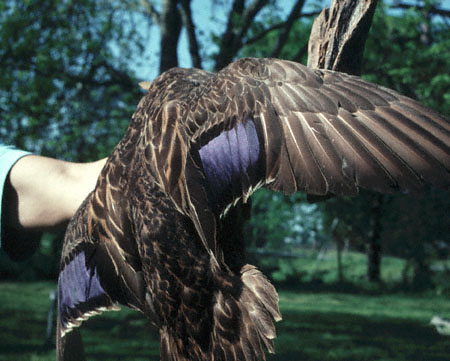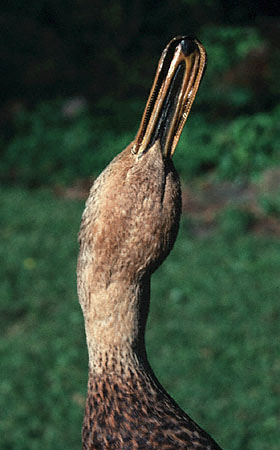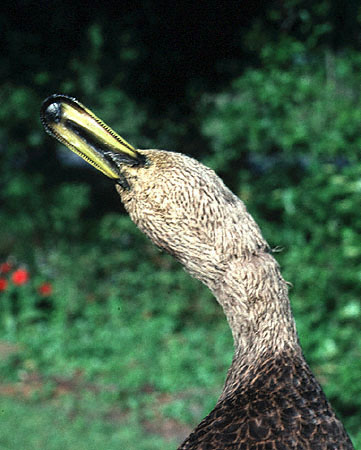| The identification of Mottled vrs. American Black Duck in Texas is a little understood or appreciated field problem for observers. One of the problems causing confusion is that all of the standard field guides illustrate the nominate race of Mottled Ducks which in the U.S. is most commonly found in Florida and the eastern Gulf Coast. Birds from most of Louisiana and Texas are of the maculosa race commonly found in Mexico. Texas Mottleds can be every bit as dark as Black Ducks, show purple speculum (depending upon light angle), and have gleaming white wing linings. Our Mottleds can vary from pale to very dark birds. There are a number of accounts describing this in the literature, but not in standard field guides. Basically, to ID a true Black Duck in Texas takes a very careful study of the feather edges of the scapulars, flank, back, etc. Mottleds show buffy internal markings on these feathers with a buffy edge, while Black Ducks lack any internal markings on these feathers and have very crisp, fine, lighter edges. There are some slight differences in the throat and facial markings as well, but these are subtle and very hard to see unless an extremely close view is obtained. I have posted several photos here to illustrate some of these points. I took these photos several years ago when I was considering writing an article concerning these field ID problems. The mounted Mottled Duck specimen at right and below was shot by a hunter in Chambers Co., Texas in the late 1980s. Note the fairly broad buffy edges to the scapulars and back feathers. Note the blue speculum color in the upper photo and the purple speculum color in the below photo of the same mounted bird. The angle of the light can cause a great deal of variability. Note the generally unstreaked chin of the Mottled Duck immediately below. Note that this is not a particularly dark Mottled Duck; many in Texas are considerably darker. Scroll down for photos of a mounted American Black Duck. |
 |
|
 |
|
 |
| The mounted American Black Duck at right and below was shot by a hunter in Minnesota in the late 1980s. Note the very fine pale edges to the back and scapular feathers. The below photo shows these pale edges a little better. They are more crisp and finer than a Mottled Duck and each individual feather lacks any internal pale marking. The photo of the throat of the Black Duck below shows the streaking from the chest continues onto the throat, quite different than that in Mottled Duck (above). This is, however, difficult to see in the field. |
 |
|
 |
|
 |
|
|
|
|
|
|
|
|
|
|













